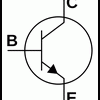-
Posts
23 -
Joined
-
Last visited
xristost's Achievements
Newbie (1/14)
0
Reputation
-
One solution which come in my mind is to put a transformer with ratio 1 : 0.46 then at the secondary the voltage will vary from 55VAC to 276VAC. If your AC/DC converter can work with that low voltage - 55VAC, then no switching will be required. But if it can't, then the transformer should be made with two secondary windings and a schematic will switch the desired secondary winding.
-
Hi, in my variant I use resistor+ 2 zeners, because voltage is already regulated with LM317, so there will be no voltage drop (if supply voltage is high enough). It's interesting to compare yet another solution for voltage reference - LM317L with resistors 270/1.8k. This will produce 9.58V. According to datasheet line regulation is 0.02%/V. If input voltage change with 1V, output will change with only 0.2mV. Temperature stability is 0.65% which is 8mV in entire temperature range. I think it's worth to try.
-
Another solution of this problem is to wire a couple of power diodes in series after the rectifier and smoothing capacitors. Each diode will reduce voltage with ≈0.7VDC.
-
It's there, in the datasheet: http://www.ti.com/lit/ds/symlink/lm117.pdf (page 21). But it is from 1.2V to 30V In the datasheet have also schematic which goes from 0V (page 20) but without constant current mode. Maybe its possible the first schematic to be modified to go from 0V.
-
Yes, yes, whatever . . . You have only words, and I have working power supplies 8)
-
It's obvious that you just repeat yourself endlessly. . . 3) I already said that two opamps are one dual opamp, so they have common supply, so IC1A have negative supply voltage. Also read again that part marked in red ind the quote. 2) About the power dissipation you are right, but the number of output transistors is a matter of choice - if someone decide to use the PS at 1V/3A, he is free to put TWO or THREE output transistors. 1) And for the first "problem" - you heavily exaggerate here :) But this "problem" have a very simple solution - we will call my schematic "Variable PS 0-25V" and everything will be OK, right? ;D
-
The design in this posting in my blog is the same as the discussed one in this topic. There are number of small improvements that are mentioned in the posting. The design in this posting is little different and is based on an old schematic published in a Czech electronic magazine. The latest version I made is simpler, has only one dual opamp and is better suited for ordinary opamps like TL082. As I said in my blog, I tested it with number of different opamps and it worked flawlessly. Couple of other people also reported that they made the schematic and it's OK.
-
If your power supplies are variable, then you can adjust both of them at 12V and connect them in this way:
-
Your latest posts are very cryptic, weird and not connected with the subject. Are you OK?
-
Go and see this video: I think that theoretically you can replace output circuitry with switching mode regulator. And if you don't care much for constant current mode, then there are tons of different switching mode regulators like LM2596 or LT1074 for example. They are very efficient, with simpler schematics, have all sorts of protections build in and may suit your needs better.
-
Maybe the regulators (LM317L and LM337L) for the opamps can be shared. And for the two channels you must double the C1 capacitor.
-
It's always amaze me how people want more and more amperage and voltage from a variable PS and most of the time they haven't any idea for what purpose they want that. Any way, I would suggest you to get finished module like this: http://www.ebay.com/itm/ZXY6010-DC-Constant-Voltage-Current-Power-Supply-Module-60V-10A-600W-/120963323698?pt=LH_DefaultDomain_0&hash=item1c29f9d732 I hardly believe you would find simple circuit with your requirements.
-
You must rename all parts to be with same designation in two schematics. It will be much easier to check for mistakes. And about the transistor Q2 in the output - I think it had another purpose - to shut down output voltage quicker when schematic is powered off.
-
I didn't find anything like that in the datasheet. There is negative input voltage limit but in this schematic input voltages of IC1A NEVER go below zero, so I don't think there is such danger. And if these opamps (TLE2141 and MC34071) are so common why there is so many question about replacing them with alternative opamps :)
-
You are not quite right about IC1A - with IC1B they share common power supply pins and so there is negative voltage -3V. And as I said in my blog both versions are tested and they work very well - I can regulate current limit almost to 5 - 10mA, below that is not possible because of input offset of the opamp.


